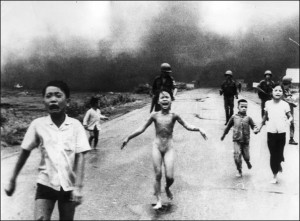I recently visited the Bodies exhibit at Atlantic Station which features anatomical presentations of preserved human corpses. They kind of ease you in. The exhibit opens tamely with a segmented human skull in a plexiglass box. The next room has a skeleton and a series of other bones. That’s when I turned, after staring at a few pieces of vertebrae, to see a cadaver with the skin peeled away; skeletal muscle fully exposed, gripping a basketball in an athletic stance, staring back. Something about knowing it was real, that this had once been a living person, made it different than any previous attempt to teach me anatomy. I was shocked and honestly a little scared. I had to force myself to come closer, some part of me fully expecting him to burst into violent life. It’s strange, but I think it may be the first time I’d seen a human corpse in person. It took a moment for my morbid fascination to make room for scientific curiosity, but something about the combination of those two feelings formulated the sensation of awe. It was almost as if I felt obligated to look closely, as a matter of respect, to the people who provided their bodies. It was incredible to look at the intricate musculature laid bare before me and know that something similar and just as complex was inside me, taken utterly for granted. Natural selection simply hadn’t required that degree of self awareness.
As we continued through the exhibit a friend of mine repeated several times that he would like to donate his body to something like this when he dies. When I pressed him further he said it was appealing to be useful even after he died, to be a part of someone else’s learning, but he also alluded to the desire to be preserved so thoroughly. Wanting to be preserved after death had never exactly made sense to me. I’d always seen it, frankly, as clinging to an existence that has certainly fled through an arrangement of matter you happen to identify with. Considering this again, while standing in front of another corpse presented as art indicated an alternative motivation. The human body is simply beautiful and while I still don’t personally care if I am preserved, I understand why someone might think it a shame to let themselves rot.
I think that beauty is seated in the functional complexity of the body and staring fascinated at humble displays of the nervous and circulatory systems I had moments near worship. I study biology, but this reminded me why. Imagining or viewing an image of the human anatomy pales in comparison to the visceral understanding of seeing the real thing, knowing every nerve and artery was meticulously divorced from the surrounding flesh. Equally striking and immeasurably more disturbing was the exhibit on development. Separated by a wall of curtains and caked in thorough disclaimers lay a series of plexiglass cylinders illustrating the progression by weeks of embryo to infant. Another friend couldn’t help herself from blurting out something about magic every few seconds and I couldn’t blame her. To me it was strange how soon we started looking like a person, it quickly became apparent how politicized the issue of abortion has become. I had more or less unthinkingly supported the doctrine of “pro-choice” without having any real understanding of what a fetus even looked like. I wouldn’t say I altered my stance, but looking at a twenty-week-old fetus the issue suddenly seemed more ethically charged than it had a moment before.
The exhibit closed with a cadaver posed to be waving goodbye and a statement to the effect that it’s easy to go about our daily life, but critical to take time to ponder our origins. In fact, I found my mind making subtle adjustments to mental models. Organs I would have imagined to be bigger were smaller, structures I would have thought to be simpler were more intricate. Everything varied slightly, nothing was the same. Scientifically inclined or not I fell victim to subtle inaccuracy and assumption. More abstractly, we’ve designed a standardized system of education based on imperfect idealized models of reality and assumed that this is somehow more effective or efficient than tangible experience. I think we all have a fragment of faulty understanding that we can only correct by personally examining reality. But please — don’t take my word for it.



